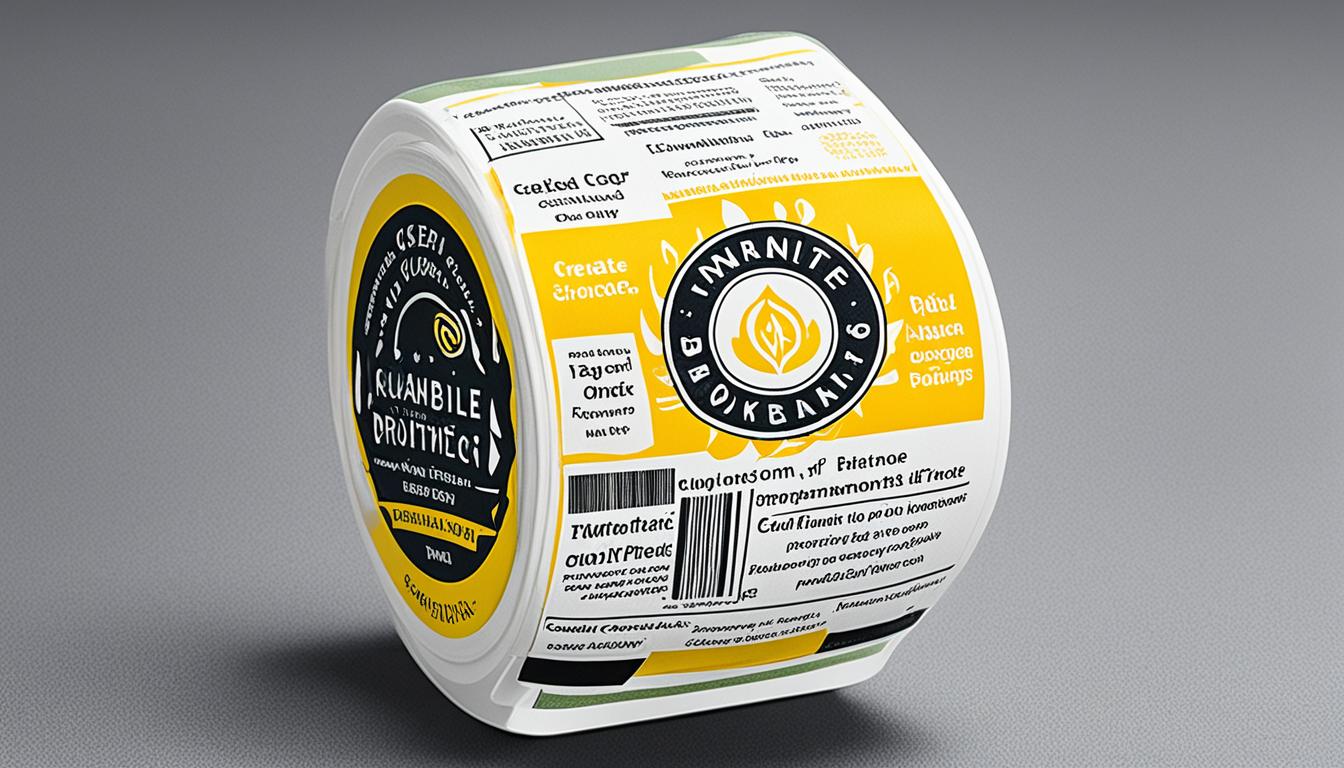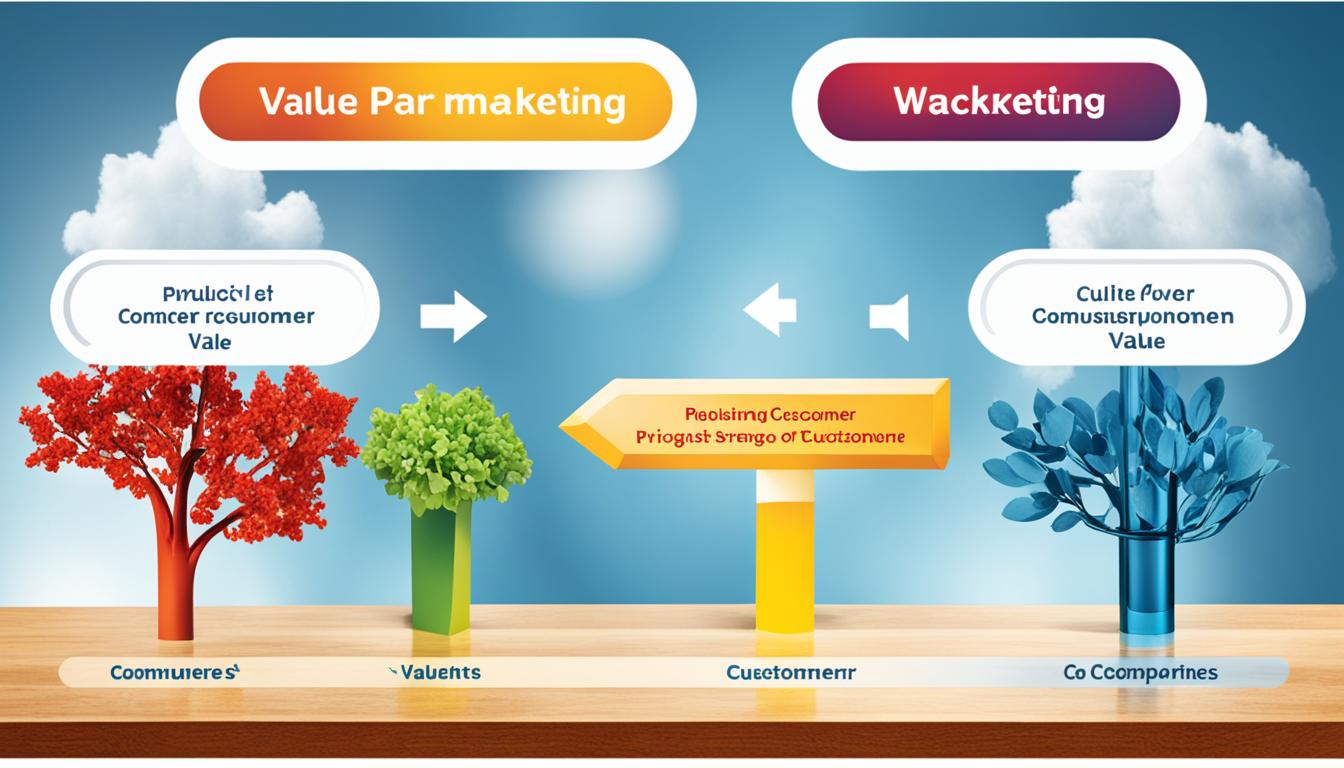In the world of marketing and advertising, an Agency of Record (AOR) is responsible for providing a wide range of services to a business. These services can include brand strategy, creative development, media placement, interactive media, web development, and digital marketing. The AOR model used to be the preferred choice for businesses as it offered effective strategy, ownership of projects, efficiency, and trust. However, with the rise of digital media and the need for specialized services, the AOR model has evolved into a more project-based approach, leading to increased competition and uncertainty for agencies.
Key Takeaways:
- Agency of Record (AOR) provides a wide range of services to businesses in the marketing and advertising industry.
- The AOR model used to be the preferred choice, but it has evolved into a more project-based approach.
- The rise of digital media and specialized services has led to increased competition for agencies.
- AOR offers effective strategy, ownership of projects, efficiency, and trust.
- The future of the AOR model lies in partnerships and embracing digital transformation.
The Advantages of the Agency of Record Model
The agency of record model offers numerous advantages for businesses seeking effective brand strategy, seamless communication, and efficient project management. By adopting this model, companies can benefit from a single point of contact, ownership, and trust, resulting in a streamlined and successful partnership with their chosen agency.
1. Single Point of Contact:
A key advantage of the agency of record model is having a single point of contact, which allows brands to maintain complete control over their brand strategy and implementation. This eliminates the risk of miscommunication and fragmentation that can occur when working with multiple agencies or freelancers.
2. Effective Communication:
The agency of record model ensures effective communication between the brand and the agency. Consistent and clear communication is essential for successful collaboration, and having a designated point of contact facilitates efficient decision-making, timely feedback, and seamless coordination, leading to optimal project outcomes.
3. Ownership and Accountability:
With an agency of record, businesses have clear ownership and accountability for their projects and campaigns. This provides clarity in terms of responsibilities, ensuring that every aspect of the brand’s strategy and marketing efforts aligns with its objectives. The agency takes responsibility for executing the brand’s vision and delivering results.
4. Efficiency and Expertise:
Working with the same agency over a long period of time allows for efficient collaboration and saves valuable time. The agency becomes familiar with the brand’s preferences, target audience, and industry, enabling them to propose and execute strategies with a deep understanding of what works best. This accumulated knowledge and experience lead to more effective marketing campaigns and faster project turnaround times.
5. Trust and Dependability:
The agency of record model fosters long-term working relationships built on trust and dependability. Continuity in collaboration allows both the brand and the agency to develop a mutual understanding, share insights, and make informed decisions together. The agency becomes a trusted partner, consistently delivering high-quality work and demonstrating their commitment to the brand’s success.
Overall, the agency of record model offers several advantages, including a single point of contact for effective communication, ownership and accountability for brand strategy, efficiency through accumulated expertise, and the establishment of trust and dependability. These benefits contribute to successful partnerships between brands and their chosen agencies, resulting in impactful marketing campaigns and business growth.
| Advantages of the Agency of Record Model |
|---|
| Single point of contact |
| Effective communication |
| Ownership and accountability |
| Efficiency and expertise |
| Trust and dependability |
Changes in the Marketing Landscape
The marketing landscape has undergone significant transformations with the rise of digital media and changes in consumer behavior. Traditional advertising methods, which once held sway, have been disrupted as audiences became overwhelmed and started turning away. This shift in consumer mindset has not only intensified competition among businesses but also prompted the adoption of new marketing and communication channels.
Social media marketing has emerged as a powerful tool for businesses to build relationships with their target audiences. The ability to connect with customers on platforms where they spend a significant amount of time has become crucial. Brands are leveraging social media to engage, interact, and share valuable content that resonates with their followers.
Another key aspect of the evolving marketing landscape is content marketing. Recognizing that traditional advertising no longer holds the same impact, businesses are investing in creating and disseminating relevant and engaging content. By providing valuable information, insights, and entertainment, brands can attract and retain the attention of their target audience.
One of the advantages offered by digital marketing is the ability to measure return on investment (ROI) more accurately compared to traditional advertising methods. Businesses can now track the performance of their marketing campaigns, analyze data, and make data-driven decisions to achieve better results. This enhanced ROI measurement capability has raised clients’ expectations, driving agencies to continually optimize their strategies and deliver measurable results.
The Impact of Digital Media
The rise of digital media has had a profound impact on the marketing landscape. With more consumers spending their time online, businesses have shifted their focus towards digital platforms to reach their target audience effectively. Digital media offers unparalleled reach, allowing businesses to extend their brand’s presence and engage with a wider audience.
| Traditional Advertising | Digital Media |
|---|---|
| Print ads in newspapers and magazines | Online banner ads, sponsored content |
| TV and radio commercials | Video ads on YouTube, streaming services |
| Billboards and outdoor advertising | Online display advertising, geotargeted ads |
As shown in the table, traditional advertising methods relied on print, television, radio, and outdoor ads to reach audiences. However, digital media has opened up new avenues for businesses to connect with consumers, making it essential for marketers to adapt their strategies to the changing landscape.
The Shift to Project-Based Models
Due to the complexity and specialization required in today’s marketing landscape, many businesses have shifted to project-based models instead of relying on a single agency of record. This approach allows businesses to work with multiple agencies that specialize in different areas, providing them with access to specialized services and expertise.
Unlike the traditional one-stop shop approach where one agency handles all aspects of marketing and advertising, project-based models allow for a more tailored and efficient approach. Businesses can collaborate with agencies that excel in specific areas such as brand strategy, creative development, digital marketing, or social media management. This way, each agency can focus on their respective strengths, resulting in high-quality and specialized services.
Moreover, working with multiple agencies fosters a collaborative environment where ideas and perspectives from different experts can be leveraged. This injects fresh thinking and creativity into marketing campaigns, ensuring that businesses stay ahead of the competition and deliver impactful results.
However, it is important to note that the shift to project-based models also brings a more transactional approach to agency relationships. Rather than long-term partnerships, agencies are seen as easily replaceable vendors, leading to a less integrated approach to marketing. While this flexibility can be advantageous in terms of cost control and adaptability, it may require businesses to invest in efficient project management systems and processes to ensure smooth coordination between different agencies.
In summary, the shift to project-based models allows businesses to tap into specialized services and expertise from multiple agencies, creating a more tailored and efficient approach to marketing. While this shift offers benefits in terms of flexibility and access to various talents, it also requires businesses to carefully manage and coordinate different agencies to ensure seamless execution of marketing strategies. Ultimately, the success of project-based models lies in effective collaboration and coordination among all parties involved.
Challenges for Agencies
The ever-evolving marketing landscape has presented a multitude of challenges for agencies. As businesses now opt for project-based models and work with multiple agencies, the market competition has intensified, resulting in reduced influence for individual agencies over client strategies.
One significant challenge agencies face is forecasting budgets and income. With project-based models, agencies struggle to accurately predict future revenue streams, making it challenging to plan resource allocation and financial commitments.
Consequently, agencies are forced to scale back their capabilities and reduce resources to balance their budgets. This reduction in resources, however, often leads to compromised performance and the possibility of being replaced by more competitive agencies.
To illustrate the impact of these challenges, consider the following table:
| Challenges | Impact |
|---|---|
| Market Competition | Increased pressure to stand out and deliver exceptional results |
| Reduced Influence | Less control over client strategies and decision-making processes |
| Forecasting Budgets | Difficulty in accurately predicting and planning financial resources |
| Reduced Resources | Limited availability of talent, tools, and technology |
| Scaling Back Capability | Compromised performance and risk of losing clients to competitors |
This table provides a comprehensive overview of the challenges agencies face in today’s competitive market. It highlights the impact of market competition, reduced influence, forecasting budgets, reduced resources, and scaling back capability on agency operations and success.
To overcome these challenges, agencies must adapt to the changing landscape and find innovative solutions that enable them to deliver excellent results while working within limited resources.
Despite the obstacles, agencies have the potential to thrive by strategically positioning themselves, leveraging their expertise, and building strong client relationships. The ability to navigate these challenges successfully will define the future of agencies in the dynamic marketing industry.
The Future of the Agency of Record Model
Despite the challenges, the agency of record model still holds promise for the future of marketing and advertising. To adapt to the evolving landscape, agencies need to embrace partnerships as a way to modernize the AOR model and provide clients with a broader range of services.
One way to modernize the AOR model is by shifting towards a lead agency model. In this approach, agencies retain ownership of key services but collaborate effectively with partners to deliver comprehensive solutions. By leveraging the strengths of different agencies, businesses can benefit from specialized expertise and achieve better results.
Mergers and acquisitions are another avenue for agencies to expand their capabilities and become the preferred choice for clients. By joining forces, agencies can pool their resources, talent, and expertise, allowing them to offer a wider range of services and meet clients’ evolving needs.
Global agency collaboration is also crucial in shaping the future of the AOR model. As businesses operate on a global scale, agency partnerships need to transcend borders. Collaborating with agencies from different regions can bring diverse perspectives, cultural insights, and creative ideas to the table, enabling agencies to deliver effective marketing strategies on a global scale.
Overall, the future of the agency of record model lies in embracing partnerships, modernizing the AOR model through a lead agency approach, exploring mergers and acquisitions, and fostering global agency collaboration. By staying adaptable and proactive, agencies can position themselves as valuable partners to businesses navigating the ever-changing marketing landscape.
Key Points:
- Agencies can enhance their capabilities and broaden their services by embracing partnerships.
- Modernizing the AOR model involves shifting towards a lead agency model, combining agency strengths for comprehensive solutions.
- Mergers and acquisitions can help agencies expand their capabilities and become the preferred choice for clients.
- Global agency collaboration is crucial for successful partnerships and delivering global marketing strategies.
What Clients Need to Consider
Clients in search of marketing services have the option to choose between specialist service providers or agencies of record. When considering partnerships, clients need to be proactive in their search for the right agency and take the time to carefully review agreements before signing. By considering the specific needs of their industry and thoroughly reviewing agreements, clients can mitigate potential issues in the future.
Choosing specialist service providers allows clients to work with agencies that excel in specific areas, providing targeted expertise that aligns with their goals. This approach often leads to more effective results and tailored solutions. On the other hand, agencies of record offer a comprehensive range of services, acting as a one-stop solution for multiple marketing needs.
When embarking on partnerships, clients should take a proactive approach to finding agencies that align with their brand values, industry expertise, and strategic direction. An extensive evaluation process should include thorough research, reference checks, and a detailed review of agencies’ track records and portfolios.
Furthermore, clients must carefully review all agreements before making a commitment. Understanding the terms, scope of work, and performance expectations is vital to ensure a smooth and mutually beneficial partnership. Clients should pay close attention to provisions related to termination, intellectual property rights, and confidentiality.
It’s important for clients to be aware that terminating an agreement mid-term may result in incurring service fees. These fees are usually specified in the agreement and may vary depending on the circumstances and the agency’s policies. Clients should also consider the potential impact of termination on ongoing projects and the relationships built during the partnership.
| Things Clients Should Consider: | Benefits |
|---|---|
| Proactively search for the right agency | Ensure alignment with brand values and expertise |
| Thoroughly review agreements | Mitigate potential issues and conflicts |
| Specialist service providers vs. agencies of record | Choose tailored expertise or a comprehensive range of services |
| Awareness of incurring service fees | Consider potential financial implications |
By carefully considering these factors and conducting due diligence, clients can make informed decisions and establish successful partnerships that drive their marketing success.
Understanding Agent of Record in Insurance
An agent of record (AOR) plays a crucial role in managing insurance policies on behalf of an insured party. Many companies rely on AORs to oversee health insurance matters and assist with decision-making for employee benefits packages. The agent of record acts as the intermediary between the company and insurance providers, ensuring smooth communication and efficient handling of insurance-related tasks.
When a company designates an agent of record, they grant them the authority to represent the company and negotiate with insurance companies. This designation is typically done through an agent of record letter, a formal document specifying the chosen agent. The letter validates the agent’s position and allows them to act on behalf of the company in all insurance-related matters.
Terminating an AOR agreement may become necessary if the current agent fails to meet expectations or lacks industry expertise. Companies may choose to switch to a different agent who can better fulfill their insurance needs and provide more effective decision-making support.
In summary, an agent of record serves as a reliable and knowledgeable partner in navigating the complexities of insurance policies and benefits packages. Their expertise and guidance are essential for companies seeking effective insurance solutions that align with their specific requirements and objectives.
The Importance of Reading AOR Letters
Before signing an agent of record letter, businesses must prioritize reading and comprehending the agreement’s details. This letter grants authority to the agent to negotiate plan details with insurance companies on behalf of the company. It is essential to understand the terms and conditions laid out in the letter to ensure the agreement aligns with the company’s needs and objectives.
In some cases, businesses may find it necessary to terminate an AOR agreement due to various reasons, such as the desire to engage an agency with greater industry knowledge or dissatisfaction with the current services provided. However, before making any changes to the AOR agreement, businesses should carefully review the legal implications and consider any service fees associated with termination.
Negotiating Plan Details
Understanding the agent of record letter is particularly crucial when negotiating plan details with insurance companies. The agreement empowers the agent to act on behalf of the company in these negotiations, making it necessary for businesses to be well-informed about the letter’s contents. By comprehending the rights and responsibilities outlined in the agreement, businesses can ensure that their interests are represented effectively during plan negotiations.
Termination Considerations
In the event that a business deems it necessary to terminate an AOR agreement, understanding the terms and conditions is of utmost importance. By carefully reviewing the agreement, businesses can anticipate any potential legal ramifications associated with termination. Additionally, it is vital to be aware of any service fees that may be applicable when discontinuing the agreement prematurely.
Legal Review
Engaging in a thorough legal review of the agent of record letter is a wise decision for businesses. By seeking legal counsel, businesses can ensure that the agreement is legally sound and in compliance with relevant laws and regulations. This will provide businesses with the necessary protection and clarity when entering into an AOR agreement.
Determining Agency Records Under FOIA
The Freedom of Information Act (FOIA) governs the release of “agency records” by federal district courts, outlining the criteria for determining what qualifies as such records. However, the process of identifying agency records can be complex and requires careful examination of the relevant factors.
One key consideration is the classification of personal notes created by government employees. Typically, personal notes are not considered agency records unless they have been circulated or used by others in an official capacity.
Similarly, records generated by federal grantees are not automatically classified as agency records unless they are obtained or created by the agency itself. This distinction accounts for the agency’s level of involvement in the creation or acquisition of the records.
While possession of records by an agency creates a presumption that they are agency records, this presumption can be rebutted by other factors. The nature of the records, their origin, and the agency’s role in their creation or possession all play a role in determining their classification.
It’s important to note that FOIA does not provide a specific definition of “records.” However, it generally encompasses all tangible recordations of information, including documents, files, emails, and other forms of recorded data.
Key Points:
- The FOIA governs the release of “agency records” by federal district courts.
- Personal notes of government employees are generally not considered agency records unless circulated or used by others.
- Records generated by federal grantees are not agency records unless obtained or created by the agency itself.
- Possession of records by an agency creates a presumption of agency records, but this can be rebutted by other factors.
- FOIA generally includes all tangible recordations of information within its definition of “records.”
Conclusion
The agency of record (AOR) model has transformed to meet the demands of the evolving marketing landscape. In today’s digital age, partnerships have become crucial for agencies to thrive and provide specialized services to businesses. Although the traditional AOR model may require modernization, agencies continue to play a vital role in driving marketing success.
However, agencies face several challenges in this ever-changing landscape. Competition has intensified as businesses now opt for project-based models, reducing agencies’ influence over client strategies. The need to forecast budgets and optimize resources has led to cost reduction measures and scaling back capabilities.
Despite these challenges, the future of agencies lies in forming effective partnerships, embracing digital transformation, and staying adaptable. By establishing strategic collaborations, agencies can enhance their capabilities, offer comprehensive solutions, and stay ahead in the evolving marketing industry.
As the marketing landscape continues to evolve, agencies must stay agile and proactive in meeting the emerging needs of clients. By staying informed about future trends and consumer behaviors, agencies can position themselves as trusted partners and continue to deliver innovative solutions in the dynamic marketing landscape.
FAQ
What is an agency of record (AOR)?
An agency of record (AOR) is responsible for providing a wide range of marketing and advertising services to a business. These services can include brand strategy, creative development, media placement, interactive media, web development, and digital marketing.
What are the advantages of the agency of record model?
The agency of record model offers advantages such as a single point of contact for brand strategy and implementation, effective communication, ownership of projects, efficiency, and trust built through long-term working relationships.
How has the marketing landscape changed?
The rise of digital media and changes in consumer behavior have disrupted traditional advertising methods. Businesses now need to adopt new marketing channels such as social media marketing and content-based marketing to build relationships with audiences and measure return on investment (ROI).
What is the shift to project-based models?
Many businesses have moved away from relying on a single agency of record and have opted for a project-based approach. This allows businesses to work with multiple specialized agencies or internal teams for different aspects of their marketing needs.
What challenges do agencies face?
Agencies face challenges such as increased competition, reduced influence over client strategies, the need for cost reduction and resource scaling, and the risk of poor performance due to handling increased scope with limited resources.
What is the future of the agency of record model?
The future of the agency of record model lies in forming effective partnerships, embracing digital transformation, and staying adaptable in the ever-evolving marketing industry. Modernizing the AOR model involves shifting towards a lead agency model and exploring mergers and acquisitions.
What should clients consider when choosing service providers?
Clients should proactively search for the right agency or specialist service providers, carefully review agreements before signing, and consider industry-specific needs. It is also crucial to be aware of the possibility of incurring service fees if an agreement is terminated mid-term.
What is an agent of record in the insurance industry?
An agent of record (AOR) acts on behalf of a company in managing insurance policies, especially for employee benefits packages. They serve as an intermediary party between the company and insurance companies, assisting with decision-making and negotiations.
Why is it important to read AOR letters?
An agent of record letter designates the chosen agent to represent the company in insurance negotiations. It is crucial to read and understand the details of the agreement before signing. Termination of an AOR agreement may be necessary for various reasons, such as seeking an agency with more industry knowledge.
How are agency records determined under FOIA?
The Freedom of Information Act (FOIA) states that only “agency records” can be ordered for release. Personal notes of government employees are generally not considered agency records unless circulated or used by others. Records generated by federal grantees are also not considered agency records unless obtained or created by the agency.







